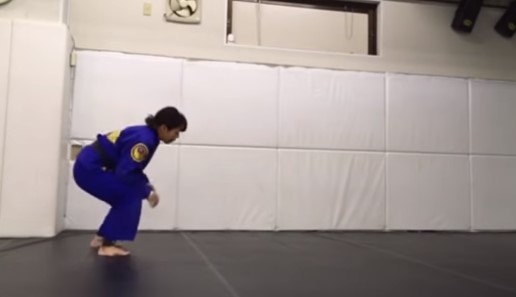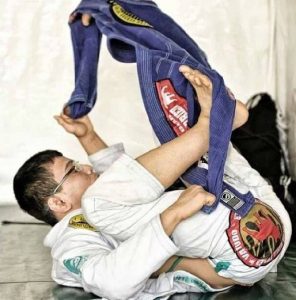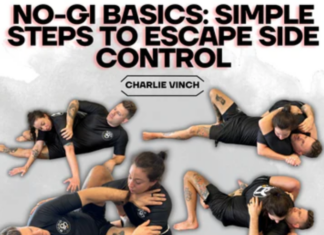
Just recently, Ben Askren tore into Jiu Jitsu on Rogan’s podcast. After the initial shock of someone second-guessing the “holy” art, I got the point. Askren was referring to BJJ’s lack of repetitive drills compared to wrestling. Come to think of it, he might’ve been right. BJJ drills are as enjoyable for students as much as warm-ups, and we all know what the most despised part of a BJJ class is. However, one look at world champions like the Miyao brothers (who are big proponents of drilling) and you start to wonder. Maybe all those BJJ Partner drills and Solo BJJ Drills the instructors insist upon actually have a role to play.
Almost every sport in the world has some sort of drill based training. The point is to allow practitioners to perfect certain sport-specific movements. Jiu Jitsu drills are no different. Although not everyone agrees or uses drills in the BJJ community, most people seem to utilize them. Albeit reluctantly, drills are used for introducing beginners to competition training. Do they really make such a difference in a student’s overall game? Let’s see why they’re considered to be irreplaceable and how to make them more fun!
The Importance Of BJJ Drills
So, how do these notorious drills fit in a BJJ class? Imagine that you’re learning a new guard pass in class. It’s a guard pass that is very effective, but you haven’t encountered it before. Now, do you think that you can go straight into using the pass in rolling or competition environments? Granted, you could attempt it, but unless you’re mega talented it won’t work straight away. Ultimately, you’ve got two choices going forward – trying it all the time in every roll, or dedicating a certain amount of time to adequate BJJ drills. Interestingly, drilling the move is going to result in much faster mastery of the move.

When drilling a student should focus on executing every aspect of the technique as perfectly as possible. Drills should be performed slowly and precisely, always taking a move to the very end of the technique. The focus should be on details and correct execution. In the case of partner drills, appropriate resistance should be applied during drills. However, that doesn’t mean preventing the partner from executing the technique. Drilling is not position sparring unless specified.
Finally, Jiu Jitsu drills come in all shapes and sizes. Just like the art, drill patterns are subject to experimentation and development, removing boredom from the equation. Different level students can do different kinds of drills to maximize their understanding of the art.
Solo BJJ Drills For Beginners
Do new students of Brazilian Jiu-Jitsu need to drill? The answer is yes, but appropriately. As mentioned in a previous article, white belts should focus on mastering the moves associated with their level. Namely, a beginner’s focus should be solely on perfecting body movement. Since lots of new students are not in BJJ shape, they also need to adapt their body’s abilities to the demands of the art. Both these aspects have a huge role in beginners’ drilling practices. In this category, solo drills are the only way to go.
BJJ Movement Drills
From white, all the way to black belt, hip escapes, bridges, technical stand-ups and similar movements do not change. The pattern of movement remains the same, only the context of their use during rolling is different. Apart from learning new techniques, beginners have to become as familiar as possible with the basic movement patterns of Jiu-Jitsu.
Solo drills can be done both at the gym and at home and can even be included in strength and conditioning programs. The above-mentioned trio of multidirectional hip escapes, different bridging variations and the technical stand up can be done everywhere, at any time. Break falls and movements like Granby rolls are a bit more supervision and are best done during class. They do provide a perfect warm-up opportunity. Check out some ideas on what you can do solo:
BJJ Mobility Drills
In terms of getting the body ready for BJJ, t is important to possess a certain level of mobility. While you don’t have to be Eddie Bravo flexible, stiffness does interfere with BJJ practice. A great way to get new students “into the groove” is to implement specific mobility drills. An added bonus of performing such drills is additional conditioning.
Wrestler sit outs, different crawl variations, some jumps as well as certain stretches can be organized as fun and efficient routines. Just take a look at Ginastica Natural:
Advanced Partner BJJ Drills
Once a student achieves blue a belt level, they might look at changing things up. Keep in mind, though, that solo drilling shouldn’t stop just because of a belt promotion. Think in terms of adding instead of subtracting. Solo BJJ drills can be done at home, during warm-up or during conditioning sessions.
Technical BJJ Drills
When people think about Jiu Jitsu drills, technical drilling is often the first thing that comes to mind. What is technical drilling? Technical drilling is the continuous repetitive practice of mostly singular moves, for time or reps. The partner’s resistance during technical drilling varies according to the students’ level and drilling goals. Learning drills tend to be slower but more detail oriented. Competition drills, on the other hand, often employ greater intensity, but lack of detail. Everything from the top and bottom movement to submit entries can be included in technical drills.
In order to successfully master a move, students must spend a certain amount of time doing drills. Going over a move a couple of times is far from enough. Drilling sessions have to be structured such that they result in maximal defectiveness. Instructor supervision is a must during technical drilling.
Advanced Flow Scenarios
For more advanced students, especially competitors, there are more complex drill structures. Instead of repeating one move over and over, students can focus on drilling scenarios. This way, both students actively interchange between attacking and defending from a multitude of positions. In recent years, 10th Planet Jiu Jitsu developed an intricate system of flow drills that they use as warm-ups.
Also, check out 1 hour of Solo drills by a female Black Belt 4 times World Champion Rikako Yuasa.
10 Strength and Condition Bodyweight Exercises for Jiu Jitsu – Tutorial


![Darce Choke Encyclopedia – Origins, Mechanics and Variations [2024] BJJ, choke, Brabo, BJJ Darce Choke, D'arce Choke, Darce BJJ Choke](https://bjj-world.com/wp-content/uploads/2017/11/JungPoirierLeeYahoo-218x150.jpg)








![Shotgun Aoki Locks Mateusz Szczecinski DVD Review [2025] Shotgun Aoki Locks Mateusz Szczecinski DVD Review](https://bjj-world.com/wp-content/uploads/2025/03/shotgun-aoki-locks-mateusz-szczecinski-dvd-review-218x150.png)


![Upper Body Chain Attacks Janine Mocaiber DVD Review [2025] Upper Body Chain Attacks Janine Mocaiber DVD Review](https://bjj-world.com/wp-content/uploads/2025/03/upper-body-chain-attacks-janine-mocaiber-dvd-review-218x150.png)
![The Empty Half Guard Michael Currier DVD Review [2025] The Empty Half Guard Michael Currier DVD Review](https://bjj-world.com/wp-content/uploads/2025/03/empty-half-guard-michael-currier-dvd-review-218x150.png)





![Crossing and Spinning Steps To Attack Israel Hernandez DVD Review [2024] Crossing and Spinning Steps To Attack Israel Hernandez DVD Review](https://bjj-world.com/wp-content/uploads/2024/09/spinning-steps-to-attack-israel-hernandez-dvd-review-100x70.png)


![Jett Thompson Master Ankle and Aoki Lock DVD Review [2024] Jett Thompson Master Ankle and Aoki Lock DVD Review](https://bjj-world.com/wp-content/uploads/2024/09/jett-thompson-master-ankle-and-aoki-lock-dvd-review-100x70.png)
![A Blueprint For Smeshing Khabib Nurmagomedov DVD Review [2024] A Blueprint For Smeshing Khabib Nurmagomedov DVD Review](https://bjj-world.com/wp-content/uploads/2024/10/blueprint-for-smeshing-khabib-nurmagomedov-dvd-review-100x70.png)





![Master The Move Anaconda Strangle John Danaher DVD Review [2025] Master The Move Anaconda Strangle John Danaher DVD Review](https://bjj-world.com/wp-content/uploads/2025/02/anaconda-strangle-john-danaher-dvd-review-100x70.png)

![Effectively Passing The Guard Luke Griffith DVD Review [2025] Effectively Passing The Guard Luke Griffith DVD Review](https://bjj-world.com/wp-content/uploads/2025/01/passing-the-guard-luke-griffith-dvd-review-100x70.png)
![Tricks for Unstoppable Takedowns Georges St Pierre DVD Review [2024] Tricks for Unstoppable Takedowns Georges St Pierre DVD Review](https://bjj-world.com/wp-content/uploads/2024/12/unstoppable-takedowns-georges-st-pierre-dvd-review-100x70.png)
![Nicholas Meregali No-Gi System DVD Unpacked: A Detailed Review [2024] Nicholas Meregali No-Gi System DVD Unpacked: A Detailed Review](https://bjj-world.com/wp-content/uploads/2024/09/nicholas-meregali-no-gi-system-dvd-unpacked-review-100x70.png)
![Power Passing Body Locks Dan Manasoiu DVD Review [2025] Power Passing Body Locks Dan Manasoiu DVD Review](https://bjj-world.com/wp-content/uploads/2025/01/power-passing-body-locks-dan-manasoiu-dvd-review-100x70.png)

![Closed Guard Reintroduced Adam Wardzinski DVD Review [2025] Closed Guard Reintroduced Adam Wardzinski DVD Review](https://bjj-world.com/wp-content/uploads/2025/01/closed-guard-reintroduced-adam-wardzinski-dvd-review-100x70.png)
![Shin to Shin Eoghan O’Flanagan DVD Review [2025] Shin to Shin Eoghan O'Flanagan DVD Review](https://bjj-world.com/wp-content/uploads/2024/12/shin-to-shin-eoghan-oflanagan-dvd-review-100x70.png)



![Complete Fundamentals Curriculum Eliot Marshall DVD Review [2025] Complete Fundamentals Curriculum Eliot Marshall DVD Review](https://bjj-world.com/wp-content/uploads/2025/02/fundamentals-curriculum-eliot-marshall-dvd-review-100x70.png)

![No-Gi Open Guard K-Guard Lachlan Giles DVD Review [2024] No-Gi Open Guard K-Guard Lachlan Giles DVD Review](https://bjj-world.com/wp-content/uploads/2024/12/no-gi-open-guard-k-guard-lachlan-giles-dvd-review-100x70.png)
![Osoto Gari for Jiu Jitsu Jackson Nagai DVD Review [2024] Osoto Gari for Jiu Jitsu Jackson Nagai DVD Review](https://bjj-world.com/wp-content/uploads/2024/10/osoto-gari-for-jiu-jitsu-jackson-nagai-dvd-review-100x70.png)